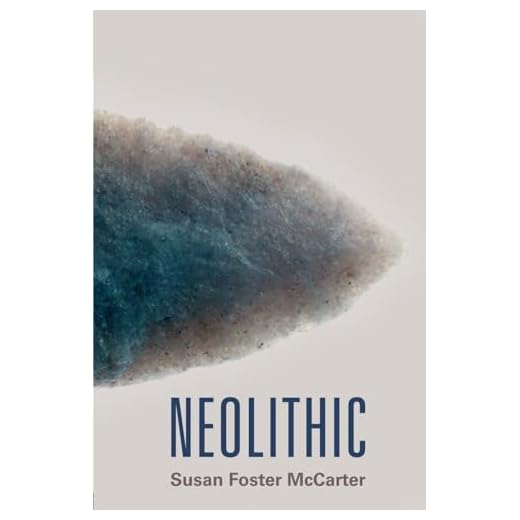




The invention of the stone axe was a groundbreaking achievement in human history. It marked the beginning of the Stone Age and revolutionized the way early humans lived and survived. Throughout history, tools have been essential for human survival, and the stone axe played a significant role in shaping our ancestors’ lives.
So, who can be credited with the invention of the stone axe? While it is impossible to pinpoint a specific individual or culture responsible for its creation, it is believed that early Homo species, such as Homo habilis or Homo erectus, were the first to develop and use this primitive but effective tool.
The stone axe was a versatile tool that served many purposes. It was used for cutting down trees, shaping wood, and preparing animal hides, among other tasks. Its invention allowed humans to build shelters, create fire, hunt more efficiently, and advance their society.
The development of the stone axe was a significant step in human evolution. It increased our ancestors’ chances of survival and laid the foundation for future technological advancements. The stone axe was the precursor to more complex tools and weapons, leading eventually to the inventions of the wheel, metal tools, and machinery.
The Origin of the Stone Axe
The stone axe is one of the oldest tools known to mankind. It has played a crucial role in human evolution and survival throughout history. The invention of the stone axe is a significant milestone in the development of early human civilization, transforming the way our ancestors lived and interacted with their environment.
The exact origin of the stone axe is still a topic of debate among historians and archaeologists. However, evidence suggests that the first stone axes were developed by early Homo sapiens, our close ancestors, around 1.8 million years ago during the Lower Paleolithic period.
The concept of using stones as tools had been around for hundreds of thousands of years before the invention of the stone axe. However, it was the refinement of this concept into a multipurpose tool that revolutionized early human society. The stone axe allowed our ancestors to cut, chop, and shape wood, opening up new possibilities for building shelters, crafting weapons, hunting, and gathering food.
The stone axe was usually made by selecting a suitable stone with a sharp edge and attaching it to a wooden handle. This simple yet effective design provided humans with a versatile tool that could be easily carried and used for various tasks. It was a major technological advancement compared to earlier tools made of bone, antler, or other organic materials.
Throughout history, the stone axe continued to be an essential tool for early human societies. It served as a symbol of power and status, and its craftsmanship became more sophisticated over time. The use of stone axes lasted well into the Bronze Age, when metal tools began to replace their stone counterparts.
| Stone Age | 1.8 million years ago – 3000 BCE |
| Lower Paleolithic period | 1.8 million years ago – 200,000 BCE |
| Middle Paleolithic period | 200,000 BCE – 40,000 BCE |
| Upper Paleolithic period | 40,000 BCE – 10,000 BCE |
| Neolithic period | 10,000 BCE – 3000 BCE |
In conclusion, the stone axe was invented by early Homo sapiens around 1.8 million years ago, marking a significant advancement in human civilization. Its invention revolutionized the way our ancestors lived, allowing them to shape their environment and survive more efficiently. The stone axe continued to be an essential tool for thousands of years, shaping the course of human history.
Prehistoric Tool Invention
In the history of human evolution, tool invention played a crucial role in shaping our ancestors’ lives. Among the essential prehistoric tools, the stone axe holds a significant place.
How the Stone Axe Revolutionized Early Societies
The stone axe, also known as the hand axe, is considered one of the earliest tools invented by humans. Its invention marked a significant milestone in our technological advancement. Prehistoric humans discovered that by attaching a sharp piece of stone to a wooden handle, they could create a tool capable of cutting, chopping, and shaping various materials.
With the introduction of the stone axe, early humans experienced many benefits. It enabled them to improve their hunting and gathering methods, making it easier to obtain food and resources. The stone axe was instrumental in clearing land, creating shelters, and building structures, which ultimately led to the development of agriculture and permanent settlements. This tool also played a crucial role in crafting other essential tools and weapons.
The Inventor of the Stone Axe
While it is impossible to determine the exact inventor of the stone axe, its invention is attributed to early hominids, specifically Homo habilis or Homo erectus. These early human species lived approximately 2.6 million to 1.3 million years ago and are believed to have used stone axes for various purposes.
Homo habilis, often referred to as “handyman,” is credited with being the first species to use stone tools, including the stone axe. This early human species possessed the cognitive abilities and manual dexterity necessary for crafting and using such tools. However, it is important to note that stone axes might have been independently invented by different groups of early humans across different regions.
A Glimpse into Prehistoric Tool Innovation
The invention of the stone axe was a remarkable achievement that shaped the course of human history. It marked a significant leap forward in tool innovation and laid the foundation for further advancements in technology. The stone axe allowed our prehistoric ancestors to overcome challenges, adapt to their environment, and ultimately thrive.
Today, while modern tools have replaced the stone axe, its invention remains a testament to the ingenuity and resourcefulness of early humans.
Early Stone Age Innovations
The Early Stone Age, also known as the Lower Paleolithic, was a crucial period in the development of human civilization. During this time, our ancestors made significant advancements in technology and tool-making. These innovations laid the foundation for the progression of human society and paved the way for subsequent cultural and technological developments.
The Stone Axe: A Game-Changing Invention
One of the most remarkable innovations of the Early Stone Age was the invention of the stone axe. This revolutionary tool allowed our ancestors to perform tasks that were previously impossible. The stone axe, with its sharp edges and sturdy structure, was a versatile tool that served numerous purposes, such as chopping wood, shaping wooden implements, and butchering animals.
The stone axe was a significant improvement over earlier tools made from wood, bone, or antler. By attaching a sharp-edged stone to a handle, early humans were able to create a tool that was more durable, efficient, and effective. The stone axe not only increased productivity but also provided a sense of security, as it could be used as a weapon for hunting or self-defense.
The invention of the stone axe had a profound impact on Early Stone Age societies. It allowed for the exploitation of new resources, such as dense forests. With the ability to chop down trees and shape them into desired forms, early humans were able to construct more advanced shelters, create barriers for protection, and build rafts for navigation.
Other Early Stone Age Innovations
In addition to the stone axe, early humans made other important advancements during this period. They developed new stone tools, such as blades, scrapers, and hand axes, which were more refined and specialized than previous implements. These tools facilitated various activities, including hunting, gathering, and processing food.
Furthermore, our ancestors began to engage in more complex social behaviors during the Early Stone Age. They formed small groups, developed language, and created symbolic expressions. These cultural and social innovations set the stage for the cognitive and behavioral evolution that would continue to shape human history.
Overall, the innovations of the Early Stone Age laid the foundation for the subsequent development of human technology, culture, and society. The stone axe, along with other tools and social advancements, propelled our ancestors forward, enabling them to adapt to new environments and improve their daily lives. These early innovations were the building blocks of human progress and set the stage for the remarkable achievements of future civilizations.
The Neolithic Era and Tool Advancements
The Neolithic Era, also known as the New Stone Age, was a period in human history characterized by significant advancements in tool development and agriculture. It spanned from around 10,000 BCE to 2,000 BCE, marking a pivotal shift from a hunter-gatherer lifestyle to settled farming communities.
Tool Advancements
During the Neolithic Era, humans began to experiment with new materials and techniques to create more efficient tools. One of the most notable advancements was the invention of the stone axe. The stone axe revolutionized hunting, construction, and farming activities, leading to significant improvements in human productivity and lifestyle.
The stone axe was typically made from flint or other hard stone materials. It consisted of a sharp, wedge-shaped stone head attached to a wooden handle. This design allowed for easier cutting, chopping, and shaping of different materials, including wood, animal hides, and stone.
The invention of the stone axe marked a significant milestone in human history as it provided humans with a tool that made tasks such as clearing land, building shelters, and processing food much more efficient. With the stone axe, early humans were able to clear large areas of land for agricultural purposes, leading to the development of settled farming communities and the advancement of human civilization.
Impact on Society
The invention of the stone axe had a profound impact on Neolithic society. It not only improved the efficiency of daily tasks but also had far-reaching implications on social and economic structures. With the ability to efficiently clear and cultivate land, early humans were able to produce surplus food. This surplus led to population growth, as people no longer had to constantly search for food and could dedicate more time to other activities.
The stone axe also played a crucial role in the development of trade networks, as surplus goods could be exchanged for other resources. It contributed to the growth of specialized craftsmanship, as tools and weapons became more refined. The stone axe served as a foundation for the development of more advanced tools and technologies that would shape human civilization for centuries to come.
In conclusion, the Neolithic Era brought about significant advancements in tool development, with the invention of the stone axe being one of the most important breakthroughs. This tool revolutionized daily tasks, facilitated the growth of settled farming communities, and played a pivotal role in the advancement of human society.
Key Cultural Contributors
The invention of the stone axe can be attributed to various cultures throughout history. These cultures have played a significant role in advancing the technology of stone tools and shaping human civilization.
The Oldowan Culture
One of the earliest known cultures that contributed to the development of stone tools is the Oldowan culture. This culture emerged around 2.6 million years ago in East Africa, specifically in the region that is now Tanzania and Ethiopia. The Oldowan people were the first to create simple stone tools by chipping away at rocks to create sharp edges. These tools were primarily used for cutting and scraping purposes.
The Acheulean Culture
Another influential culture in the history of stone tool technology is the Acheulean culture. This culture originated around 1.7 million years ago and was widespread across Europe, Africa, and parts of Asia. The Acheulean people refined the technique of making stone tools by creating handaxes, which were symmetrical and multipurpose tools. These handaxes were used for various tasks, including butchering animals and woodwork.
It is important to note that the invention of the stone axe was not attributed to a single individual, but rather to the collective knowledge and innovation of these cultures.
Throughout history, the development and use of stone tools continued to evolve, with different cultures contributing to the refinement and diversification of stone tool technology. The use of stone tools had a profound impact on human survival and progress, enabling early humans to hunt, build shelters, and develop new skills.
Overall, the key cultural contributors to the invention of the stone axe were the Oldowan and Acheulean cultures, whose advancements in stone tool technology shaped the course of human history.
Impact and Legacy
The invention of the stone axe had a profound impact on early human civilizations. Its creation marked a significant technological breakthrough and revolutionized the way humans interacted with their environment.
Here are some key impacts and legacies of the stone axe:
- Hunting and Food: The stone axe enabled early humans to improve their hunting abilities, as it allowed for more accurate and efficient killing of animals. This increased the availability of food sources and played a crucial role in human survival and the development of early agricultural practices.
- Warfare and Defense: The stone axe proved to be a powerful weapon in conflicts between early human tribes. Its sharp edge and versatility made it a valuable tool for both offensive and defensive purposes. It influenced early tactics and strategies, shaping the dynamics of human warfare.
- Tool Making and Resource Extraction: The stone axe served as a multifunctional tool in various activities, such as building shelters, making fire, crafting other tools, and extracting resources like wood and plant fibers. Its invention revolutionized the efficiency and precision of these tasks.
- Social and Cultural Development: The stone axe played a significant role in shaping social structures and cultural practices of early human societies. It contributed to the division of labor, as people specialized in different tasks related to the production and use of stone axes. Its significance is evident in various archaeological findings and cultural artifacts.
- Technological Advancement: The creation of the stone axe marked a significant milestone in human technological advancement. It laid the foundation for the development of more sophisticated tools and technologies, fueling the progress of civilization.
Overall, the stone axe revolutionized early human life and had a lasting impact on human history. It symbolizes our ancestors’ ingenuity and resourcefulness and continues to be a significant artifact in understanding our human origins.






